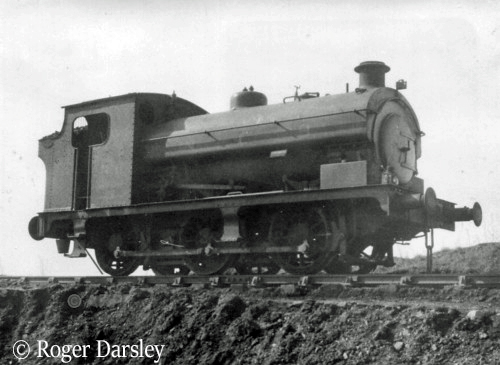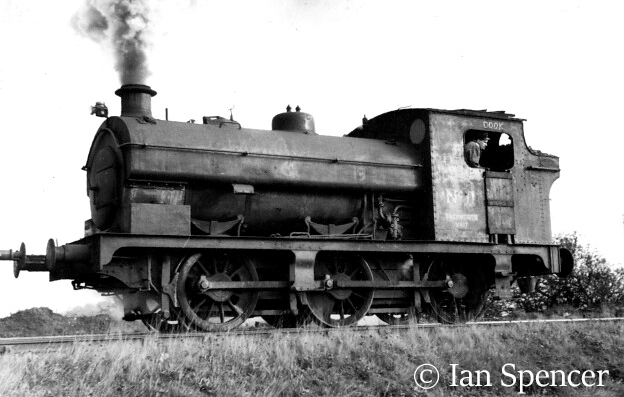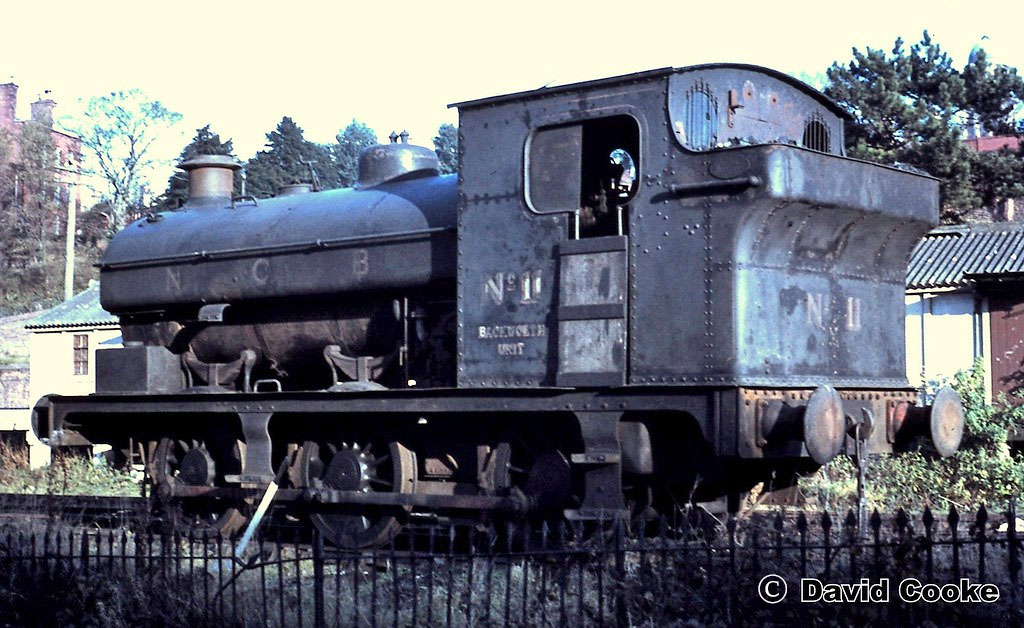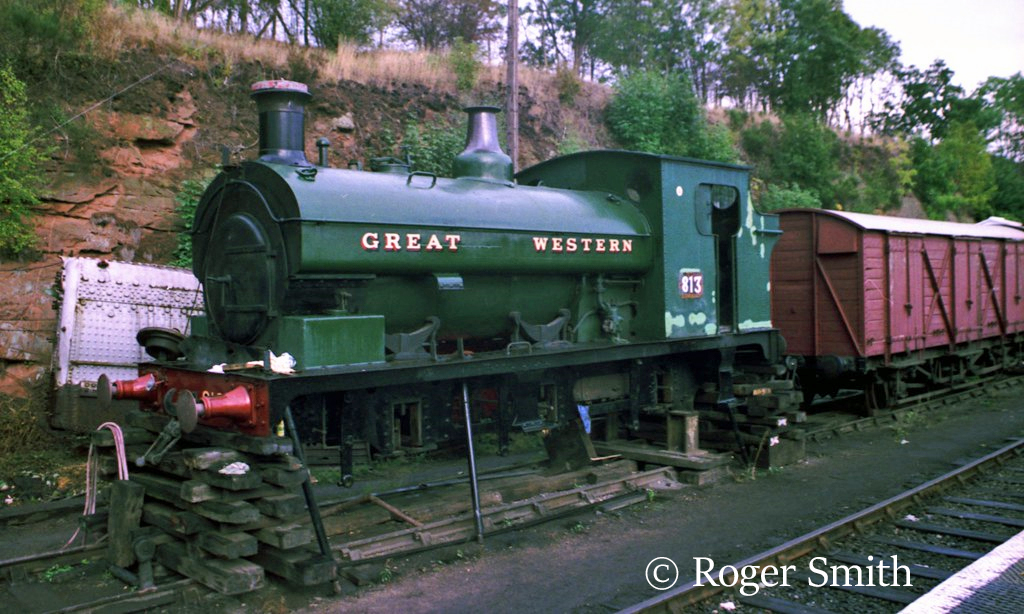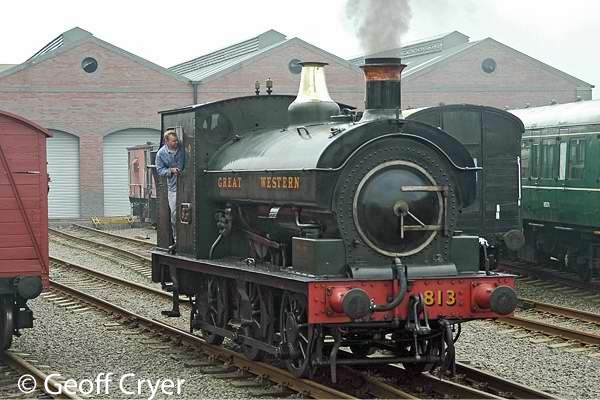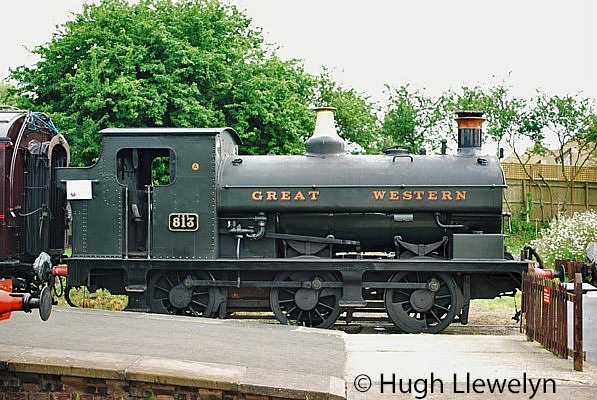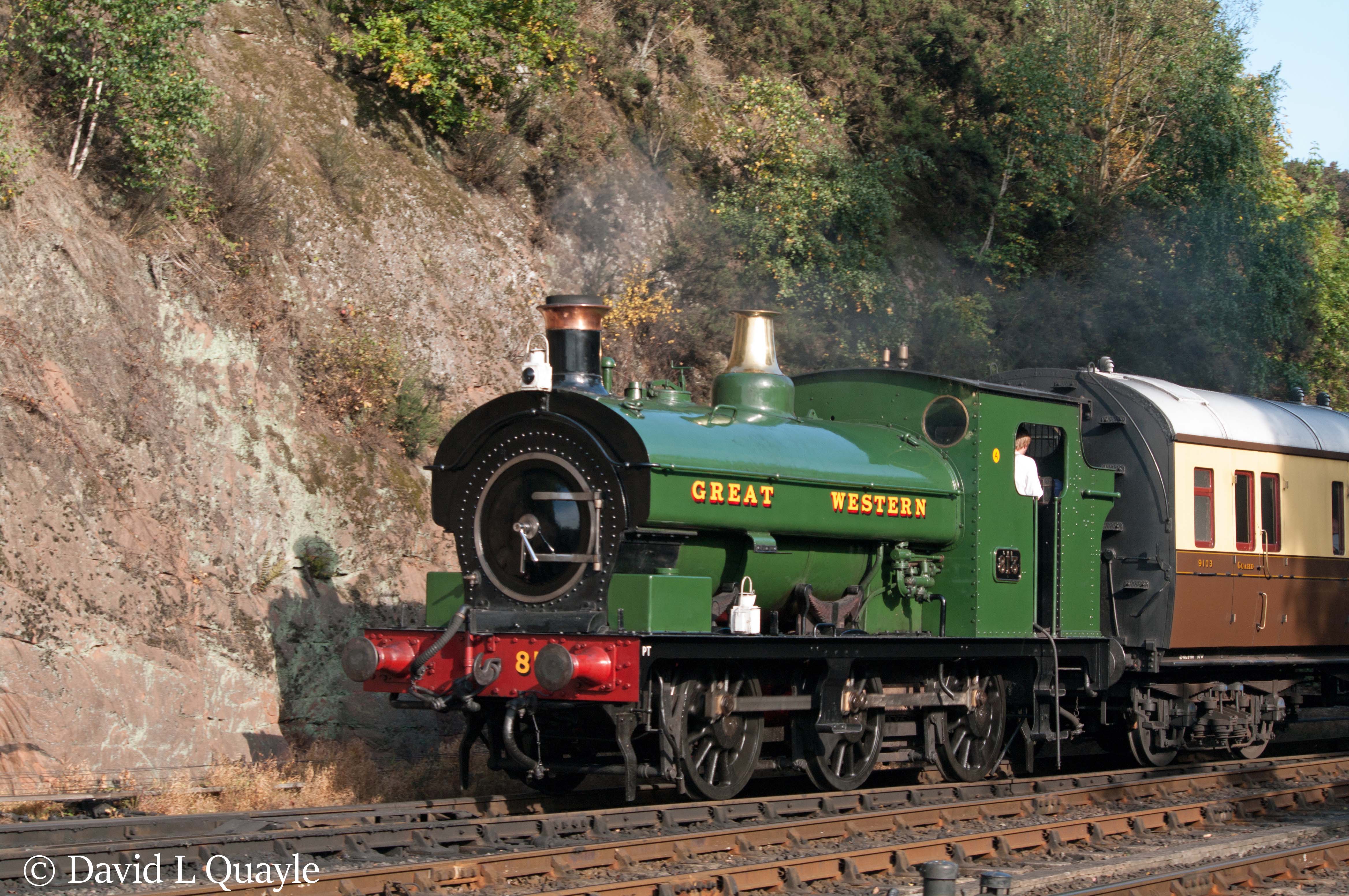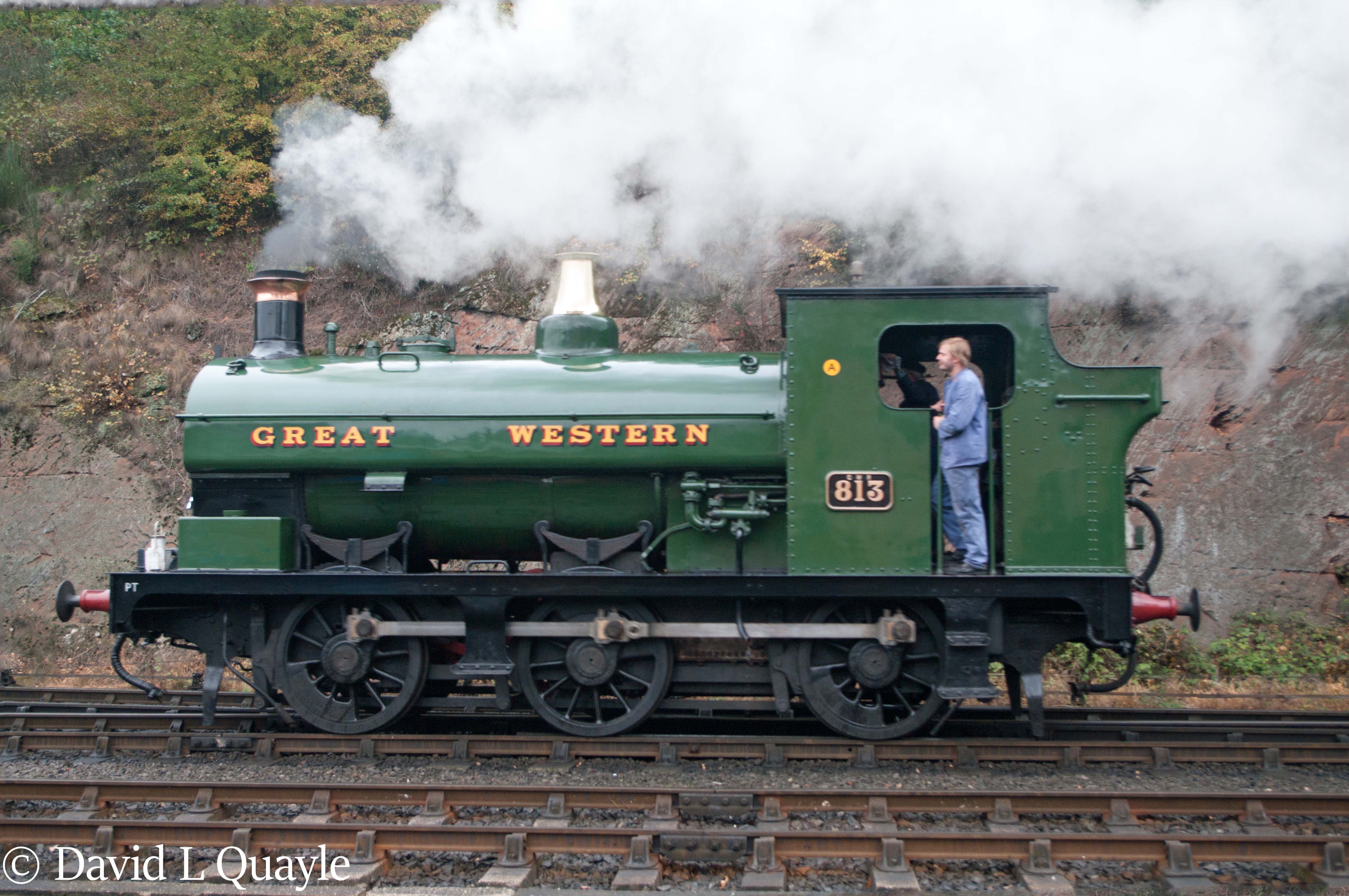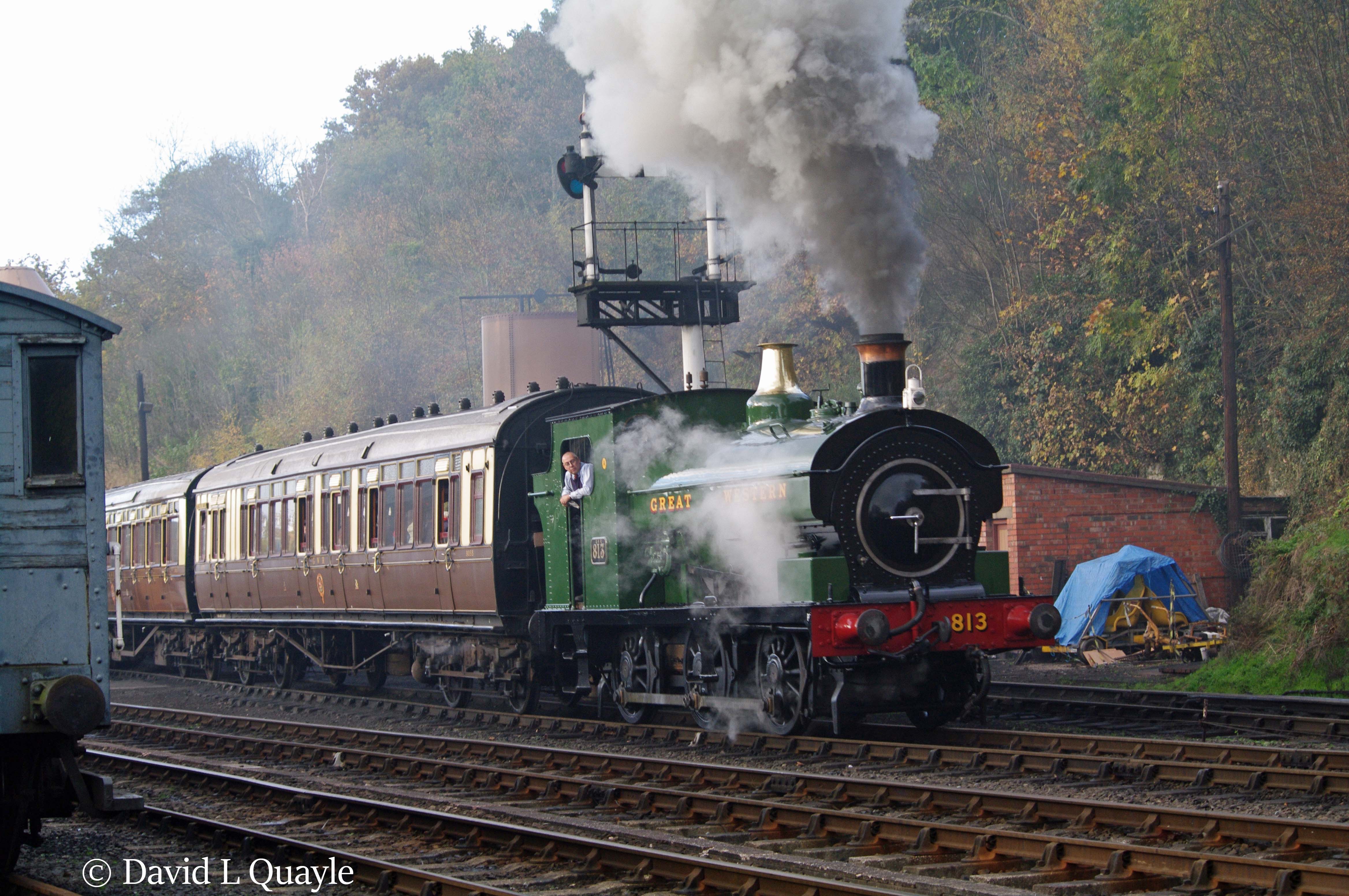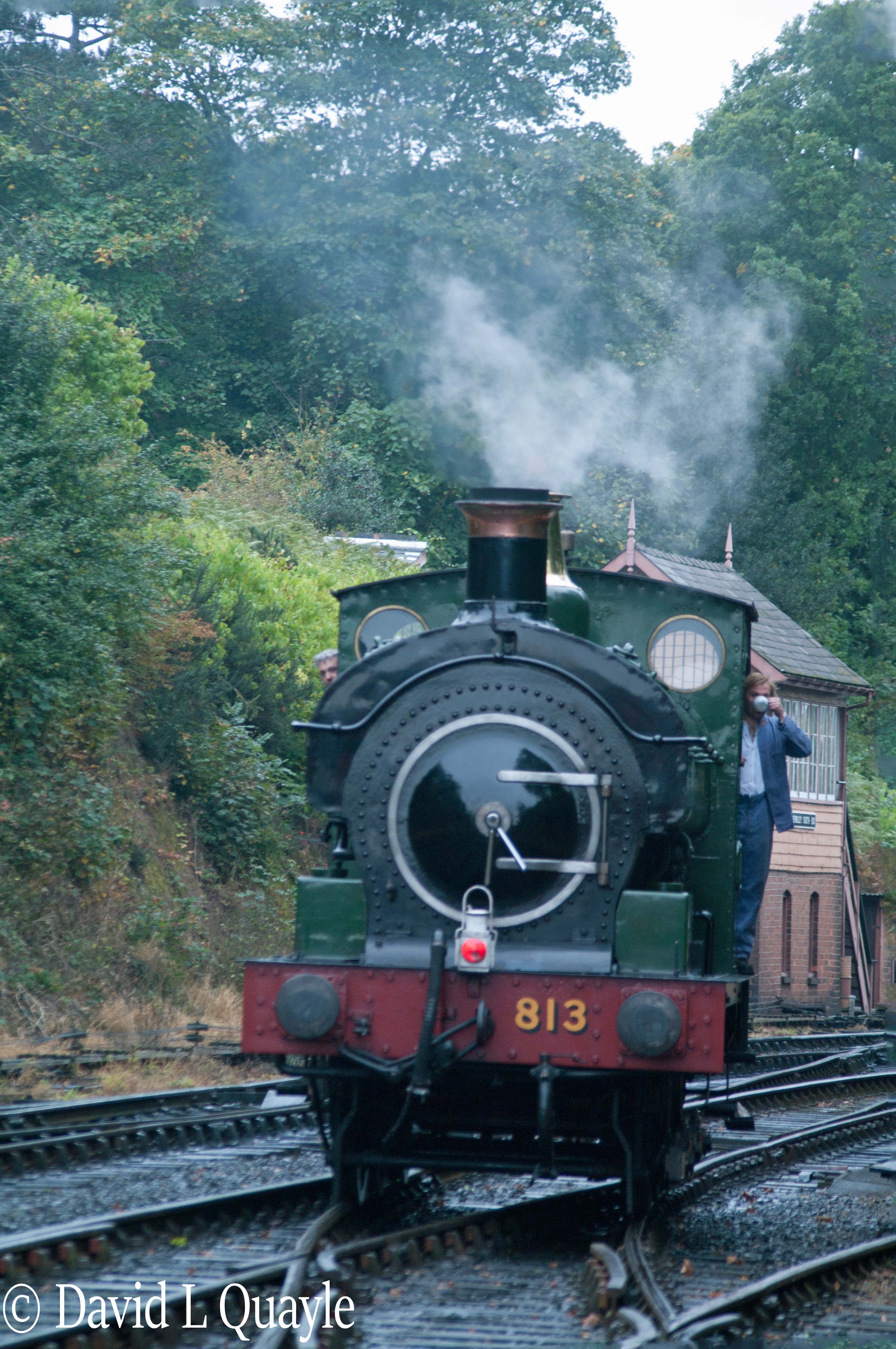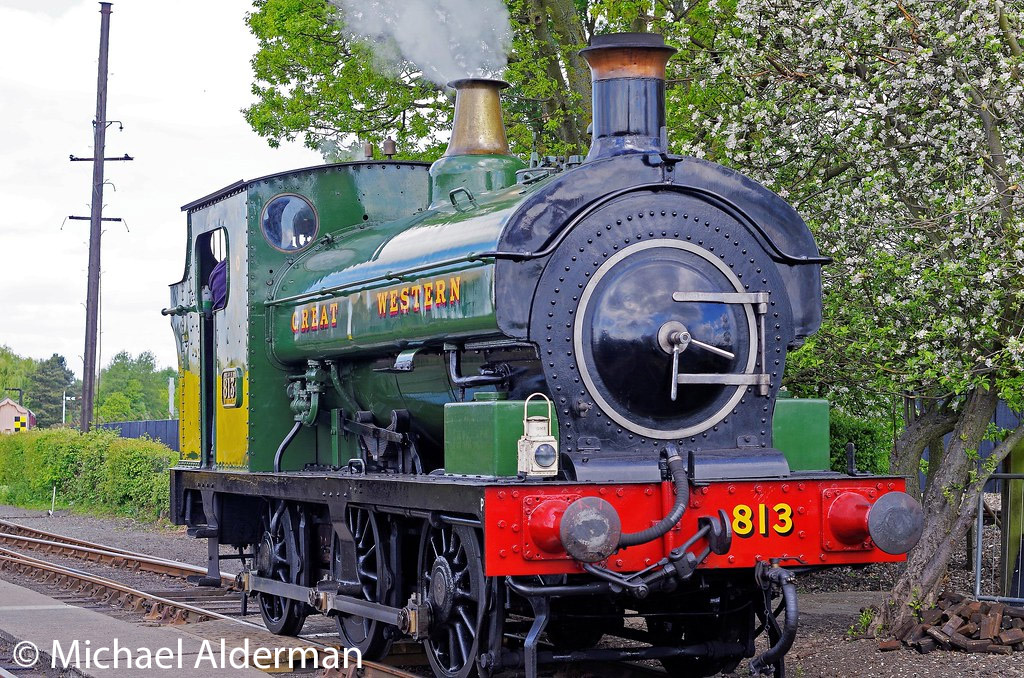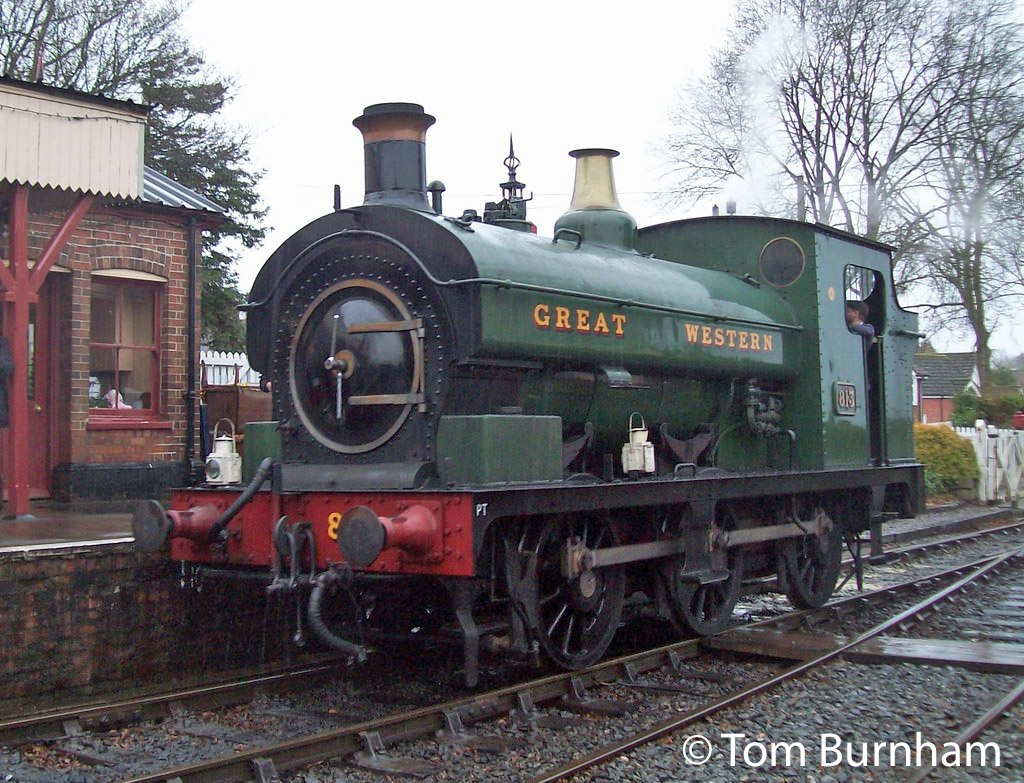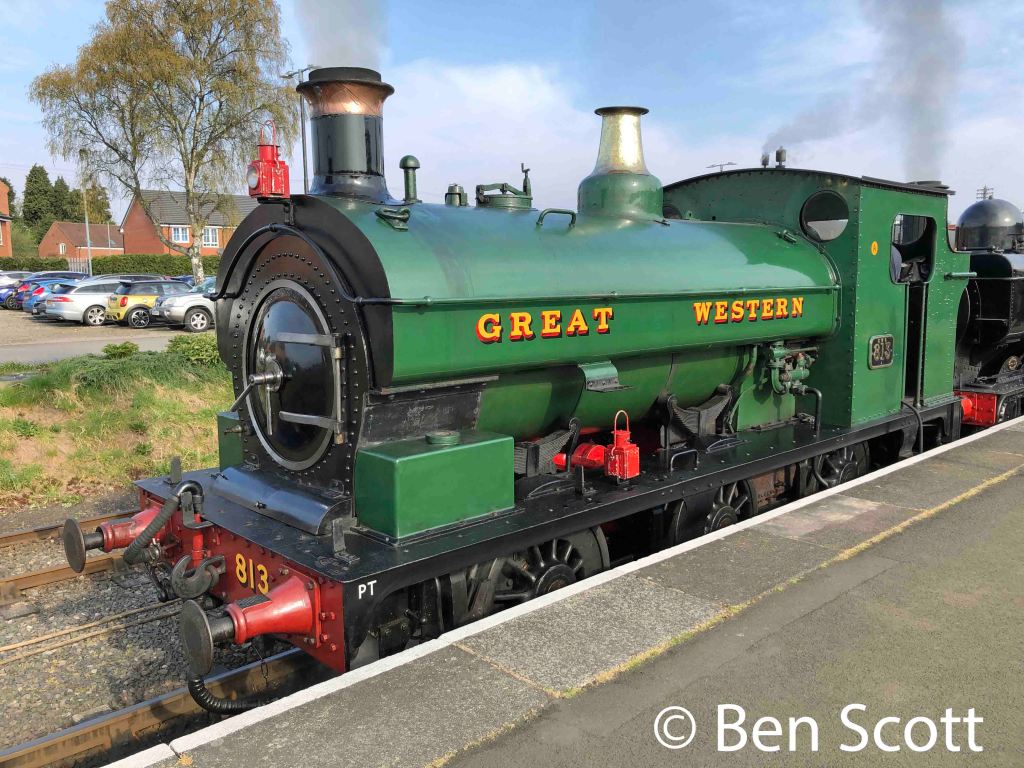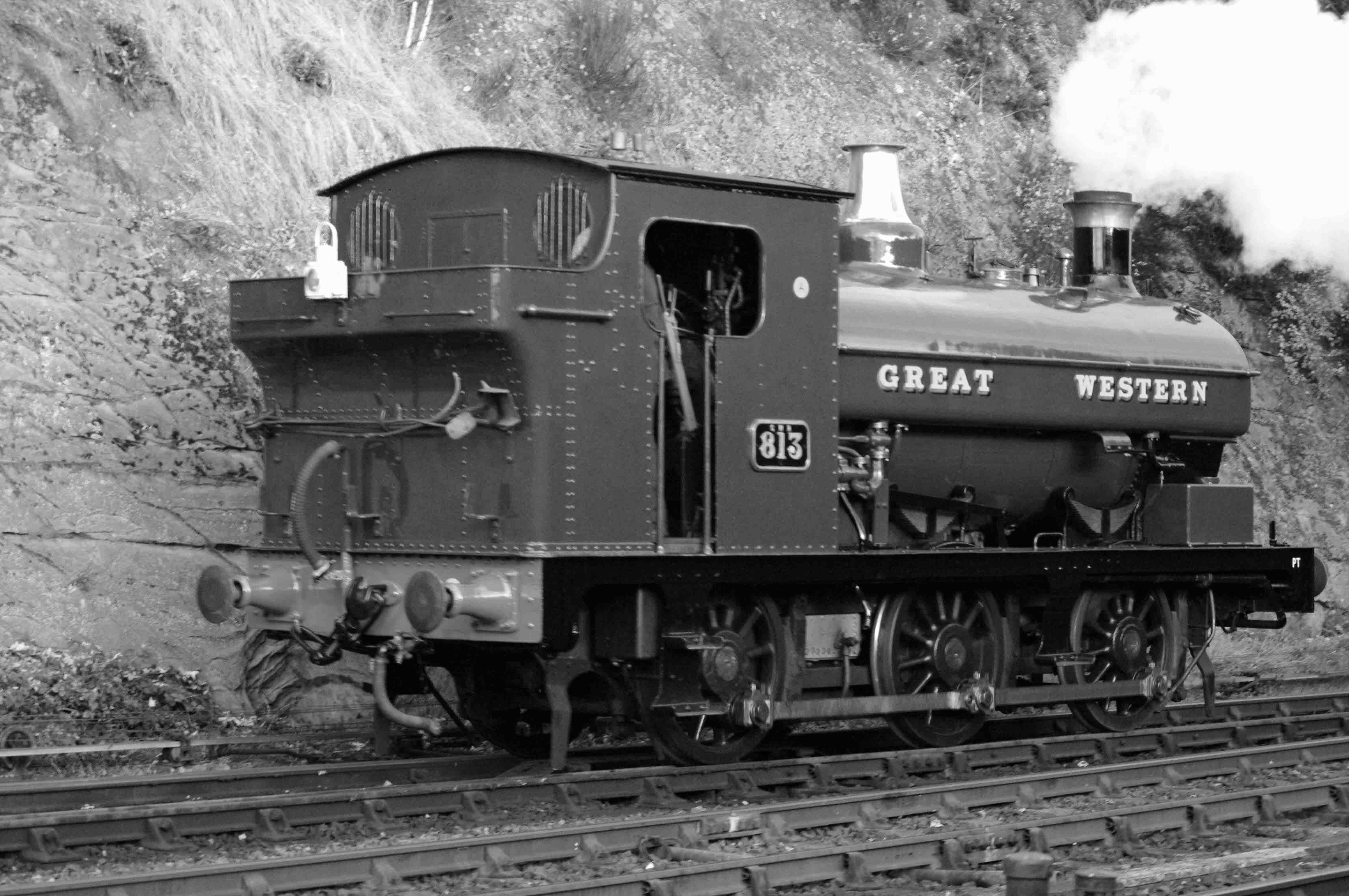
| Introduced | 1900 |
| Designer | |
| Company | Port Talbot Railway & Docks Company |
| Weight | 44t 0cwt |
| Driving Wheels | 4ft 0.5in |
| Boiler Pressure | 160psi |
| Cylinders | Inside – 16in x 24in |
| Tractive Effort | 17,410lbf |
| Valve Gear |
The Port Talbot Railway & Docks Company was incorporated in 1894 to acquire and extend the existing docks at Port Talbot and to build new railways inland to open up access to the coal producing Llynvi and Garw valleys. For shunting and trip working a stud of nine 0-6-0 saddle tank locomotives was acquired between 1898 and 1901. The first three were supplied by Robert Stephenson & Co in 1898, followed by a further six of almost identical design built by Hudswell Clarke & Co of Leeds in 1900/01.
Preservation
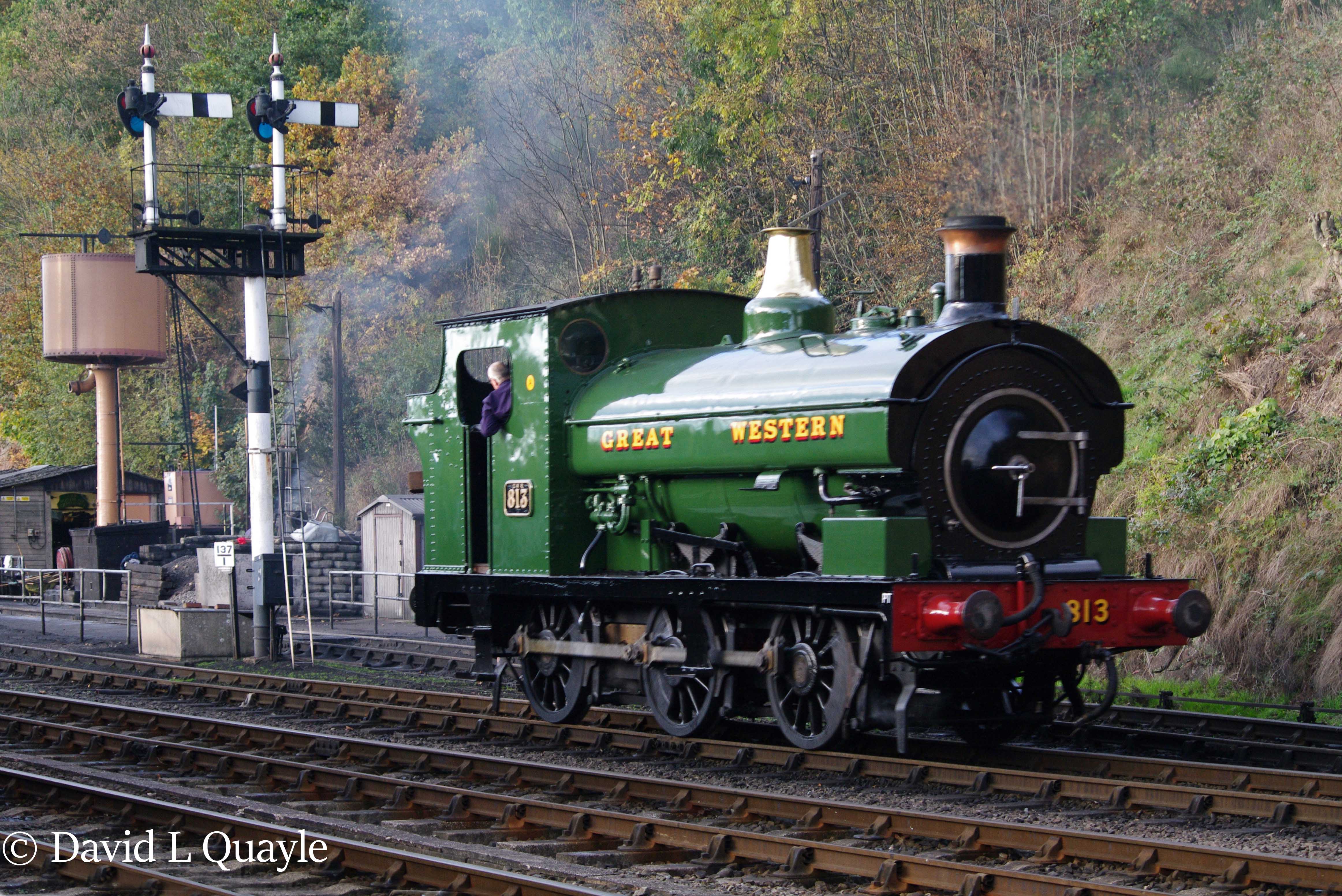
813 (GWR813 & PTR26)
What was later to become GWR 813 was completed by Hudswell Clarke (works number 555) in June 1901 at a cost of £2,189. As PTR 26 it was set to work from that Company’s engine shed at Duffryn Yard, Port Talbot.
Prompted by the desire to thwart the westward expansion of the Barry Railway beyond Bridgend and into the Swansea area, the GWR entered into an agreement with the Port Talbot Railway in 1908 under which the GWR took over operation of the Port Talbot Railways (excluding the docks) in return for guaranteeing the level of annual dividend paid to Port Talbot Railway shareholders. From that date Port Talbot locomotives (with the exception of a few retained for the docks use) were added to GWR stock. However, as they were technically on loan, they were not re-numbered into the main GWR engine series until the 1923 Grouping. Also from 1908, the Port Talbot Railway locomotive shed at Duffryn Yard was transferred to the GWR Neath Division, Port Talbot Railway footplate staff were transferred to GWR employment and standard GWR locomotive drafted into Duffryn to work alongside the local Port Talbot locomotives. After the 1908 major maintenance of Port Talbot locomotives was undertaken at Swindon and (after 1926) Caerphilly. This commenced the gradual process of “Swindonisation” which, in the case of number 26, included the provision of standard GWR fittings such as injectors, tapered buffers, whistles, safety valves and numerous cab and boiler mountings and fittings. The boiler itself was “westernised” and provided with a new smokebox complete with Dean style smokebox door. A later and more substantial alteration involved the provision of a standard GWR pattern 2 ton coal bunker which required the fabrication of a six inch extension to the back of the locomotive to support a second rear buffer beam. Perhaps the most characteristic feature identifying the Swindon connection was the inevitable brass safety valve bonnet mounted somewhat incongruously on the top of the dome.
Following the Railway Act of 1921, the Port Talbot Railway was fully absorbed into the GWR on 1st January 1922 and all the locomotives were allocated numbers in the GWR series proper. Number 26 became GWR number 813 although it did not assume its new identity until emerging from Swindon Works in March 1924 after a visit lasting 17 months.
From the late 1920s the GWR embarked on a programme of replacing much of its ageing fleet of shunting engines together with the many of the non-standard types inherited from companies absorbed at the Grouping and, in furtherance of this policy introduced the ubiquitous 5700 class pannier tank in 1929. Early victims included the Port Talbot Railway saddle tanks and, by 1934 all had been withdrawn from service. Five were sold for further service with the coal industry – three to pits in South Wales and two 9 including 813) via Robert Stephenson & Co to collieries in the North East of England. 13 itself was placed on the GWR Sales List in March 1933 and eventually sold direct from Duffryn to Robert Stephenson & Co on 25th January 1934 for £360. After a few modifications, which included the fitting of Ross Pop valves in place of the GWR safety valves and brass bonnet, Stephenson in turn sold the locomotive to Backworth Collieries Ltd near Newcastle-on-Tyne. There it was re-numbered 12 and put to work on the Backworth system which extended from the pits owned by the Company to coal shipping staithes on the River Tyne. In 1947 the locomotive passed to newly formed National Coal Board, becoming NCB 11 in 1950. In the same year a new boiler was supplied by Hudswell Clarke followed by a replacement firebox in 1962. The latter was, undoubtedly, a contributing factor to the survival of the locomotive into the preservation era.
By 1966, with the contraction of the coal industry and the availability of more modern locomotives, NCB 11 was relegated to the status of spare engine at Backworth and in the following year was offered for sale to the newly formed GWR 813 Preservation Society for the sum of £320 (£40 less than the amount realised by the GWR in 1934). Following hectic fund raising activities, purchase was eventually completed and the engine moved to the fledgling Severn Valley Railway in November 1967. Restoration work commenced almost immediately but lack of expertise and resources and the general run down condition of the locomotive meant that it would be almost nine years before it could be steamed again and a further twenty-five years before restoration to full working order would be satisfactorily completed.
In 1975 813 was cosmetically restored to GWR livery and participated as a static exhibit at the Rail 150 Anniversary celebrations at Shildon. Mechanical renovation was completed the following year and the engine returned to steam. However, progress came to an abrupt halt following a major mechanical breakdown at the September 1976 Severn Valley Railway Steam Gala. The locomotive actually failed on its first outing after only six hours due to the quality of work undertaken by a contractor during the restoration work being substandard. The problem was that the left-hand piston had not been assembled properly resulting in its stroke being too long and hitting the cylinder cover until it went through the end and destroyed it.
Further renovation work led to re-entry into service in 1984 followed by an appearance in steam at the GW150 Exhibition at Didcot in My of that year. Yet more mechanical problems again halted progress shortly thereafter and the engine was once again sidelined, having seen only a few days in service since its return to steam. The problem this time was that the wheel centres and axleboxes were out of alignment resulting in the locomotive waddling all over the place.
After much soul searching and serious fund raising, renovation work eventually resumed in 1996 with the bulk of the work being undertaken under contract by the Severn Valley Railway Locomotive Department.
Over the following four years a comprehensive programme of work was completed at the Severn Valley Railway workshops including complete overhaul of the motion, axleboxes and running gear, replacement of wasted platework, provision of new GWR type safety valves and injectors, repairs to sddletank and chimney, re-creation of 1920s style cab interior layout including pipework and appropriate boiler fittings, provision of vacuum brake gear, retubing of and repairs to the boiler and fabrication of a new smokebox incorporating a replacement Dean style smokebox door (original removed in 1950). Following completion of the project the locomotive was successfully steamed in July 2000 and released for a final painting at the end of that month. Before that could be completed, however, the engine had to be pressed into emergency front line service on the Severn Valley Railway on passenger services for a few days in August following a sudden spate of boiler failures that left the Railway seriously short of motive power.
Apart from the Severn valley Railway, the locomotive visited some 25 different railways and centres between its return to service in July 2000 and withdrawal from service for overhaul and heavy boiler repair in September 2009 when the boiler certificate expired.
The locomotive returned steam in August 2016 after a six-year overhaul which included replacing the coupling rods which the locomotive had acquired during its industrial service with new ones made to its original design. The overall cost of this overhaul is estimated to have cost £186,000 including£30,000 for the new coupling rods.
In April the locomotive failed with a fracture of the large casting that supports the rear axle springing under the cab floor and extends under the coal bunker. This is believed to be an original 122 year old component. As a result the locomotive will be out of service for some time.
In March 2024 it was reported that it was hoped that the locomotive would be back in service during the following month.
| Home Base | Current Status | Owner |
| Severn Valley Railway | Out of service | GWR 813 Preservation Fund |
